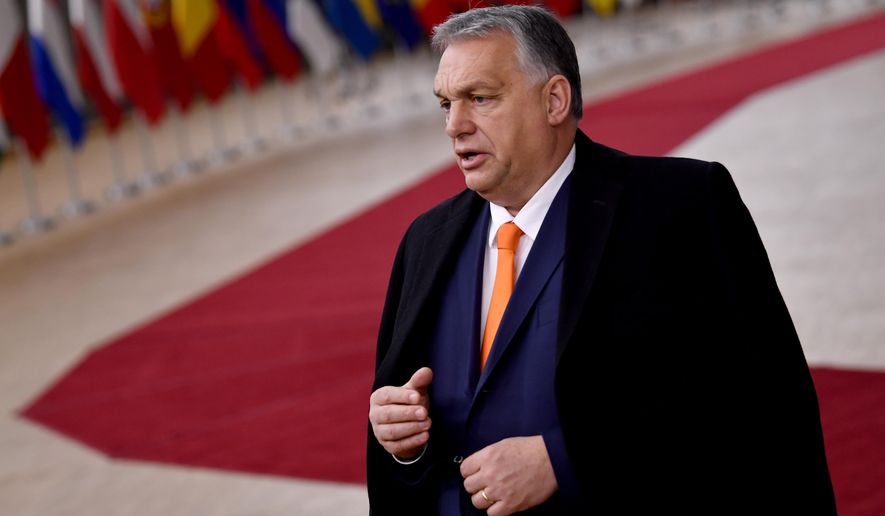In 1989, Viktor Orbán, at 26 a founding member of what was then the left-leaning youth party Fidesz, gave a rousing speech at the ceremonial reburial in Budapest of Imre Nagy, a martyr of the 1956 uprising against Communist rule in Hungary.
The leader of the Young Democrats (Fidesz is the Hungarian acronym) praised Nagy as the “last responsible Hungarian leader” and demanded free elections and an end to Communism before a massive crowd of some 300,000 people. Millions more watched the ceremony on live TV. Mr. Orbán seemed to burnish liberal, cosmopolitan credentials as Hungary transitioned from one-party rule in Moscow’s shadow to a democratic, multi-party system.
That Viktor Orbán is long gone.
The man who has been Hungary’s prime minister since 2010 is now a feared right-wing authoritarian, clamping down on press freedom while changing election laws to benefit Fidesz, rejecting Muslim immigrants, and invoking not his country’s escape from an authoritarian regime but its fascist past under Miklos Horthy, an antisemite and Christian nationalist who was directly complicit in Hungary’s role in the Holocaust.
While Mr. Orbán’s government is seen by many in Europe and the U.S. as evidence that democracy is retreating in the former Eastern Bloc states, it has captured the imagination of some American conservatives, namely top-rated Fox News commentator Tucker Carlson. Mr. Carlson spent a week in Hungary touting Mr. Orbán as a potential model for cultural conservatives who are alienated by cultural liberalism and opposed to mass migration.
In this episode of History As It Happens, Veronica Anghel, an expert on democracy and the rule of law at the Johns Hopkins School of Advanced International Studies, discusses the ways Mr. Orbán uses and misuses history to bolster his vision for Hungary.
“There’s a belief that society should be made up of true Hungarians,” said Ms. Anghel, “meaning White, Christian and heteronormative. And this comes out in conversations that you would have with Fidesz politicians. ”In recent years Mr. Orbán has taken dramatic steps to revise Hungary’s past, none more unsettling to his former anti-Communist colleagues than relocating the statue of Imre Nagy from Freedom Square, where it had stood for 23 years as a symbol of democracy rather than Communism or fascism.
“[Orbán] keeps investing in a simplified and renovated version of Hungarian history,” Ms. Anghel said. “To build this kind of narrative you need a form of selective amnesia, because the Fidesz government is rewriting Hungary’s national history to reclaim the symbol of its fascist, interwar past while ignoring elements of antisemitism, genocide and mass executions that characterized that period.”
Beyond Mr. Orbán’s policies, Ms. Anghel said Hungary’s problems transitioning to democracy are not uncommon in Eastern Europe or other parts of the world whose political cultures lack experience with multi-party pluralism, racial and religious tolerance, free-wheeling market economics, and press freedom.
Critics of Hungary’s “backsliding” may overlook that establishing democracy is difficult, she said. The citizens of the post-Communist states are nonetheless disappointed about their countries’ struggles in tackling a host of accumulating economic and social problems. Indeed, Mr. Orban exploited widespread discontent during the global recession to return to power in 2010.
Democracy requires a state of fragile equilibrium between leadership, group interests, and individual rights and freedoms. These will always be in tension,” Ms. Anghel said.
As to whether Hungary can remain a democracy with an increasingly authoritarian leader, “As long as we divorce liberalism from democracy, neither liberalism nor democracy can exist.”
For more of Veronica Anghel’s remarks about Hungary and the state of democracy in the former Eastern Bloc, listen to this episode of History As It Happens.




